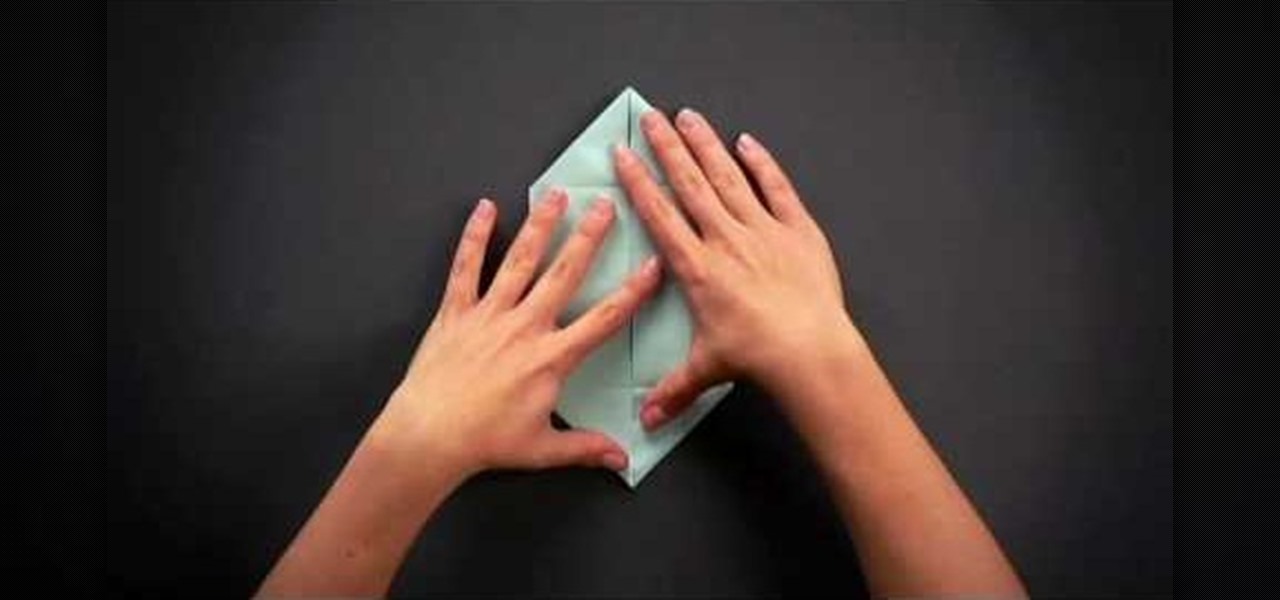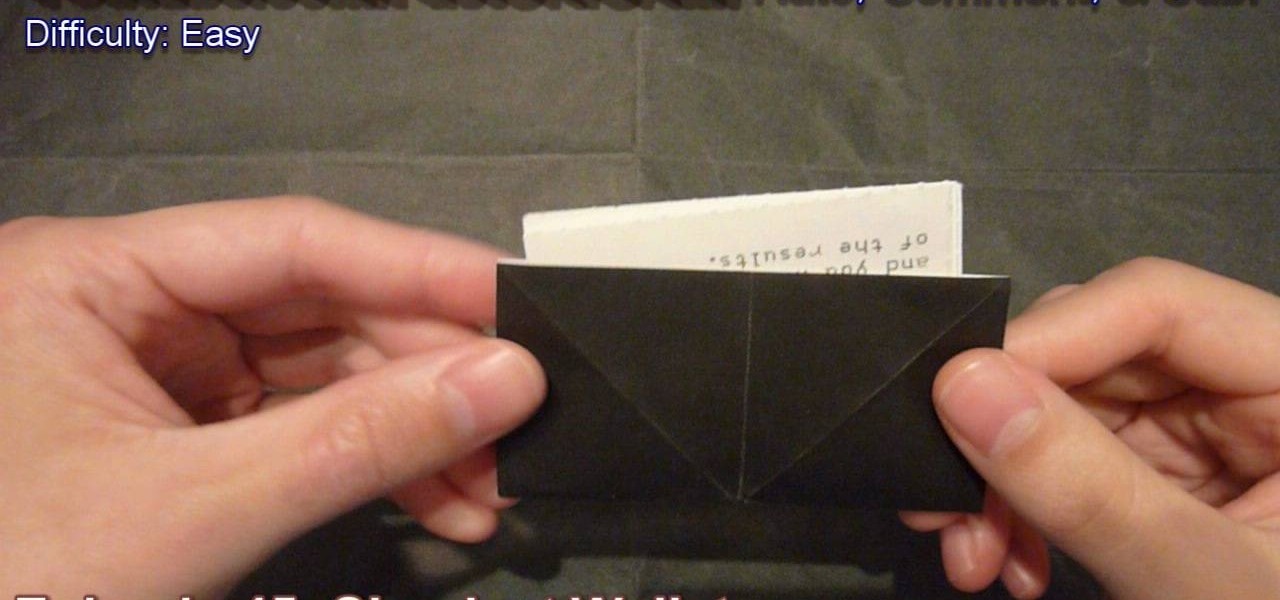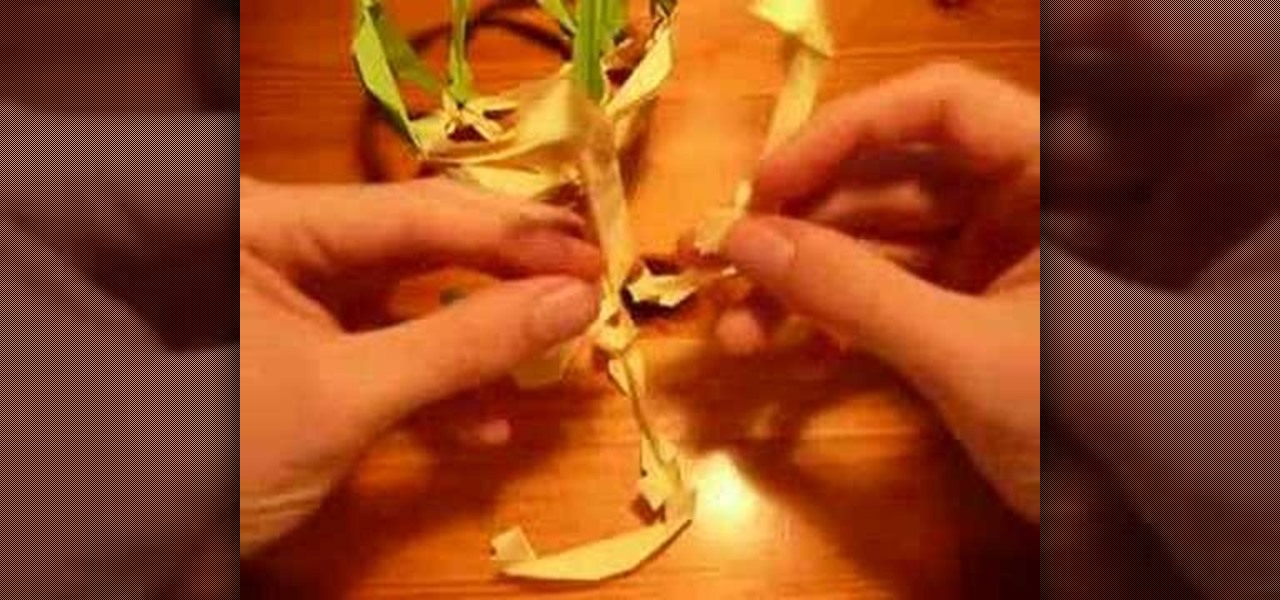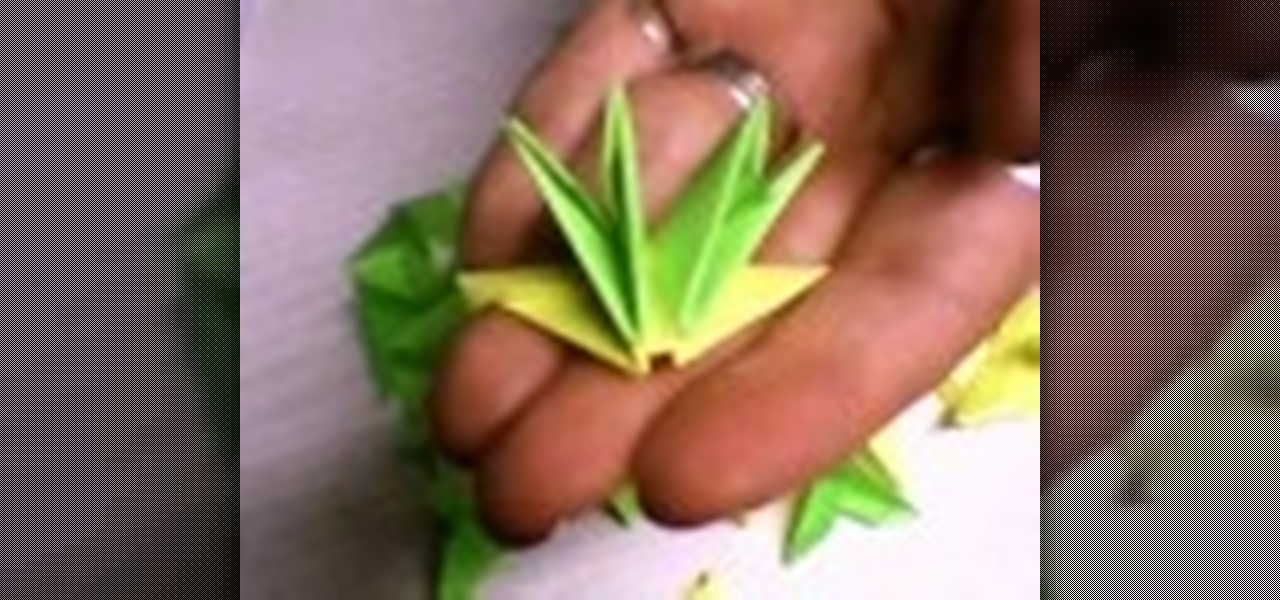
Cory has posted some great picture of Father Magnus' intersecting cubes (the great man is holding one in his right hand) - well the above is what happens when five tetrahedra intersect. It is modular origami and made from just ten sheets of origami paper. technically in a folding sense it is easy - but putting it together is mind-warping

Modular origami is a technique that can be used to build some pretty interesting and impressive models of mathematical objects. In modular origami, you combine multiple units folded from single pieces of paper into more complicated forms. The Sonobe unit is a simple example unit from modular origami that is both easy to fold and compatible for constructing a large variety of models. Below are a few models that are easy to make using this unit.

After becoming addicted to basic sonobe modular origami, I decided to make ornaments for relatives as Christmas gifts. I tried using fancy paper from stores like Paper Source, and cutting it to proper origami size, but I could never get the tight folds I wanted with non-traditional, non-origami paper. I ended up using this metallic origami paper that folds beautifully, and I'm pretty happy with the tiny models I ended up with. Forgive these pictures (iPhone/Instagram), I don't have my regular...

Here's my version of his icosahedron: I colored it in this one so that you can see the pentagonal faces of a dodecahedron:

Cory's post with instructions and templates Here's my first attempt at the 30 squares model. I needed to be a little bit more careful in the measuring and cutting as not everything matches up - but it is still a really pleasing shape.

Each curved module replaces the equilateral triangle of a simple octahedron. Inspired and copied from Cory's post with original artwork by Richard Sweeney

A source of inspiration... Models folded and photographed by Michal Kosmulski. There are only two sets of instructions on the site, but they are very well done. I wish he had covered more of the models. Here are a few I would like to tackle (I'll admit my eyes are bigger than my plate):

It's once again Monday, which means it's time to highlight some of the most recent community submissions posted to the Math Craft corkboard. I also thought we'd take a look at building a model that has appeared in numerous posts. It's the simplest of the intersecting plane modular origami sculptures: The WXYZ Intersecting Planes model.

Last Thursday's post demonstrated how to Make Yin-Yang Pillow boxes, which were based on equilateral triangles and squares. The units for making these boxes were created by Phillip Chapman-Bell, who runs an amazing origami blog and has a spectacular flickr photostream. Using these units, you can make also make 4 of the 5 platonic solids. I made an additional template based on the regular pentagon so that the dodecahedron can be built completing the set.

Last post, the Sonobe unit was introduced as a way to use multiple copies of a simply folded piece of paper to make geometric objects. In this post, we are going to explore that concept further by making two more geometric models. The first is the truncated icosahedron, which is a common stitching pattern for a soccer ball. The second was supposed to be the pentakis dodecahedron, but through systematic errors last night, I actually built a different model based off of the rhombic triacontahed...

With this video how-to, you'll learn how to wow your friends with elaborate, geometrical balloon animal designs. In particular, you'll be taught a method for assembling a very sinister two-headed snake.

Sure, you've probably seen a million YouTube videos that feature the impressive schemes of 2,000-sided modular origami balls that seem to defy gravity as well as patience. But sometimes the simplist origami craft is the most striking.

The Wood Whisperer is Marc J. Spagnuolo, a professional and passionate furniture maker, who also contributes to Fine Woodworking and Popular Woodworking. In this video, Spagnuolo shows us how to build a French cleat storage system. It's a very versatile unit, and gives you plenty of storage space without cluttering up a room.

Barbabella shows how to make a modular origami hexagonal box lid with star design. Fold a two-sided square sheet of paper to form a triangle, unfold it and fold it in the opposite direction. Using the guidelines fold the paper on three sides forming a small triangle and leave one end as it is. Turn over the sheet and fold the opposite side of the unfolded one as shown. Now mark the points as shown and fold it on one side. Now fold it to mark point below and the crease ends at the point marked...

First things first: Do not try to attempt this super crazy complex origami project unless you've had your fair share of experience folding modular origami.

First things first: Do not try to attempt this super crazy complex origami project unless you've had your fair share of experience folding modular origami.

We know that there is some seriously impressive origami out there. From 30-sided modular origami spheres to magic cubes and advanced, rounded figures like dragons, the world of origami offers so much to create if only you practice.

Want to test your origami-making skills? This video shows you how to make an origami steamboat icosahedron, a 20-faced star that'll put your origami cranes and origami flowers to shame. This pinwheel-inspired shape resembles modules by Tomoko Fuse.

The basic tenet of origami is to create an object - a bird, cube, monkey, etc. - using a single piece of paper. And while for the most part this is possible, there are notable exceptions, including modular origami and this menacing red bull.

When you muse on the topic of origami, you're probably imagining some pretty advanced stuff that sends your head - if not your fingers - for a spin. Modular dodecahedrons (what?) and magic squares, done by the more advanced origami artist, make the art seem too difficult for common butterfingers like us. But fear not; no matter how clumsy you are with crafting, we've got an origami project that you can do easily.

Origami seems super complicated if you're just starting out. After all, with projects like 30-sided modular spheres and magic cubes, it's easy to find your beginner level crane a bit pathetic.

Origami's an art, and when you get into 3D origami, it definitely gets harder. It involves more than just one piece of paper and a few folds. It requires plenty of paper, plenty of folds, and plenty of patience. This six-piece modular heart cube can look great, but you need patience, and probably some practice to get it right. So, check out this two-part video tutorial to see exactly how to fold the six-piece origami heart cube.

Fold your own eight pointed transforming ninja star! This is a modular origami model, where you will join eight identical modular pieces together to form the star. You can even make this out of Post-It notes, or any square paper!

A nice complicated modular origami by Mio Tsugawa ( http://puupuu.ojaru.jp). Made from 30 modular origami units, I made 10 green and 20 yellow to make a "stripe" on the ball.

Looking for an easy modular origami project? This video tutorial presents a complete, step-by-step overview of how to make an impressive 3D dodecahedron using origami, the traditional Japanese folk art of paper folding. For more information, and to get started making your own modular dodecahedrons, watch this arts-and-crafts guide.

You've probably seen a lot of impressive how-to videos - or simple "show off" videos - on how to fold crazy 100-sided modular origami sphere-like thingymabobs, but most of the time we're betting you're sitting there going, "huh?".

This origami 6 unit modular is really nice and easy to make! Origami is the timeless art of Japanese paper folding. Watch this origami how to video to learn how to fold Japanese brocade. Origami is a fun craft and your models make nice, homemade gifts. Practice makes perfect.

This cinematography tutorial explains how to setup the Redrock mircroShouldermount for the first time. The video covers two basic configurations: for a stock video camera and for an existing camera setup. The Redrock shoulder mount is a modular system designed to meet an individual's customizable needs.

Fun modular origami butterfly ball model made from 12 units. After assembled, toss it in the air and give it a whack. The model will burst apart and butterflies will fall to the floor.

You don't need to be able to create crazy 100-side modular spheres to make beautiful origami projects. In fact, a great portion of the more popular origami projects are on the easier side (good news for sausagefingers like us).

So we're going to ask you one question that will change your origami folding life forever: Are you ready to move beyond cranes? So many people get stuck and attached to making origami cranes because they're easy, cute, and pretty.

The core principle of origami is folding something from a single sheet of paper. The idea is to challenge your mind to create something fabulous out of very limited material. And while this is quite the poetic journey, as you'll see with modular origami and this origami tutorial, sometimes more than one sheet is necessary to get the job done.

This origami Icosahedron is a very sturdy modular model and it is very attractive. Origami is the timeless art of Japanese paper folding. Watch this origami how to video to learn how to fold the Icosahedron. Origami is a fun craft and your models make nice, homemade gifts. Practice makes perfect.

Even origami veterans who can pull off 18-sided modular origami balls had to start somewhere. If you're interested in becoming a legendary origami master, begin with this simple project.

Add to your boffer larp arsenal with these foam arrows! This tutorial shows you how to make a modular boffer arrow out of three different kinds of foam, a cloth cover, arrowhead shafts, scissors, duct tape and your favorite kind of spray adhesive.

A kusu what?? Learn how to create a kusudama, or a paper medicine ball made with multiple identical pyrimidal units, by watching this video.

See how to origami a 3D turtle. Try your hands at a little three-dimensional origami, a different approach to traditional Japanese origami, which is the art of paper folding. 3D origami is a little tougher though, because you're creating modular pieces that fit together to create a whole... a whole 3D turtle.

This model is a modular origami 6 unit ball. Diagrams on Yurii and Katrin Shumakov's website: http://library.thinkquest.org/27152/towns/oriville/oriver/practice/05.htm

This 6 unit modular origami design should look like 3 intersecting diamonds. Fold each piece and then assemble as shown.

This modular origami ball requires thirty (30) units. After folding all the pieces, assemble them as shown to make a spiked ball.









































